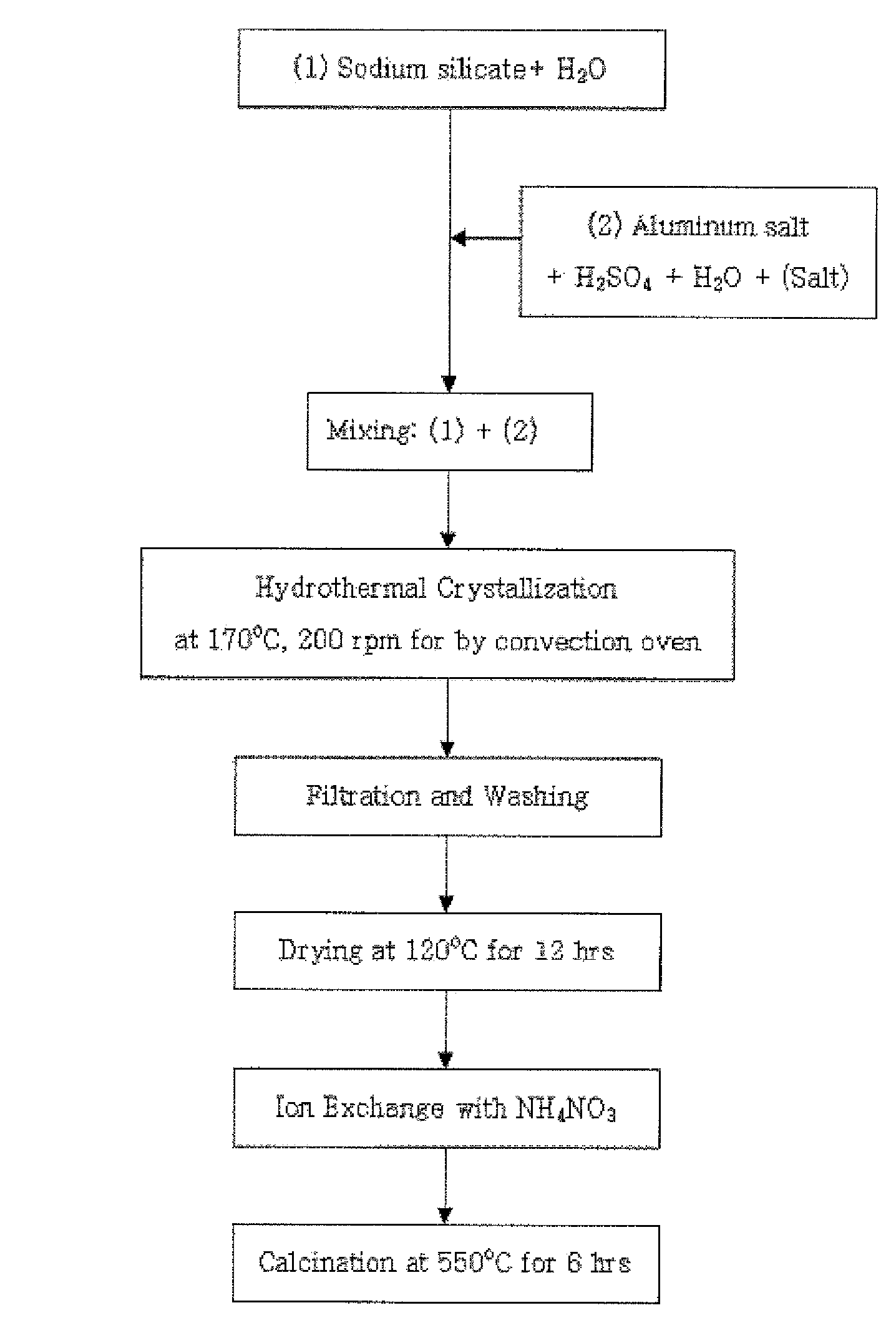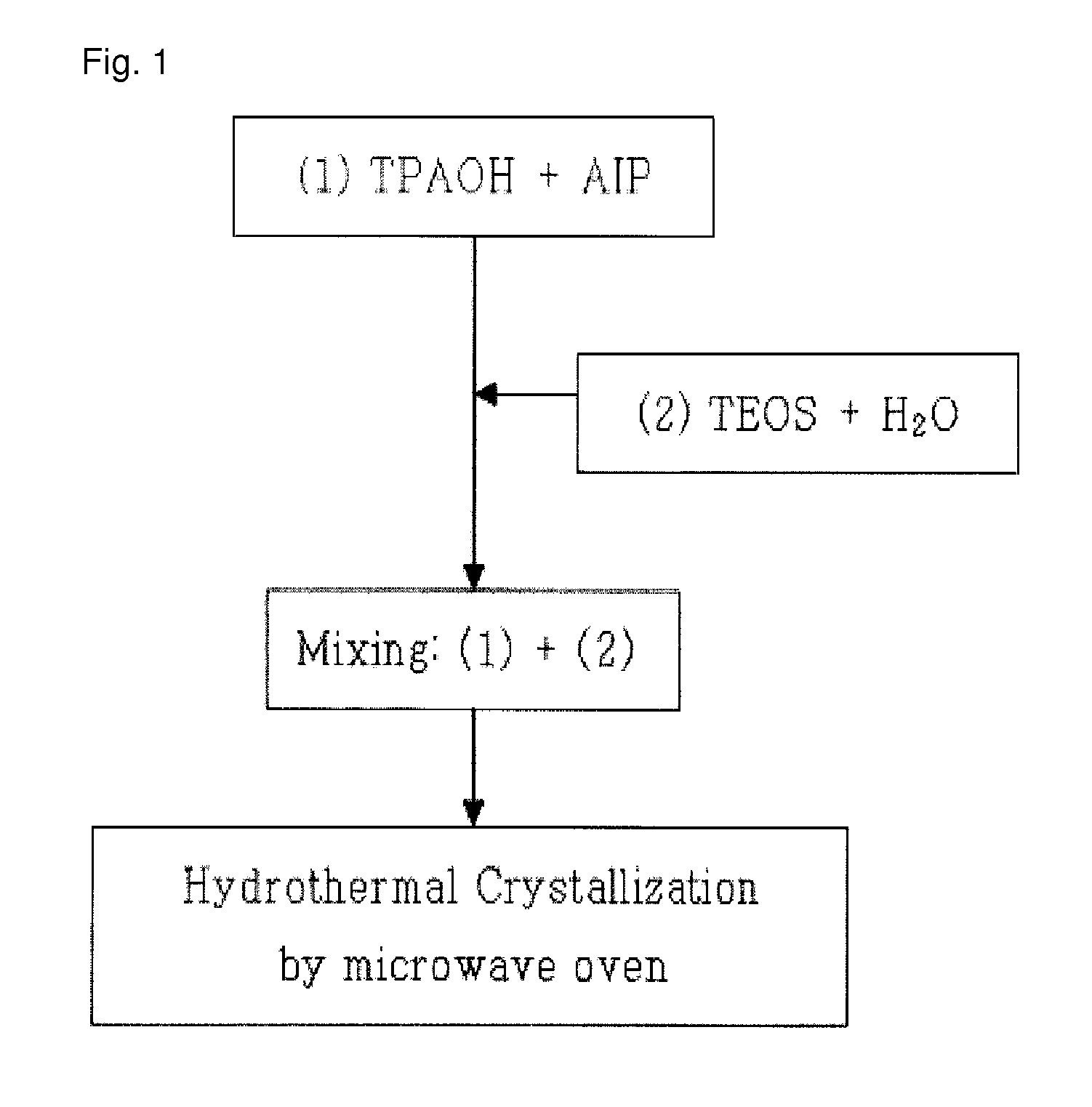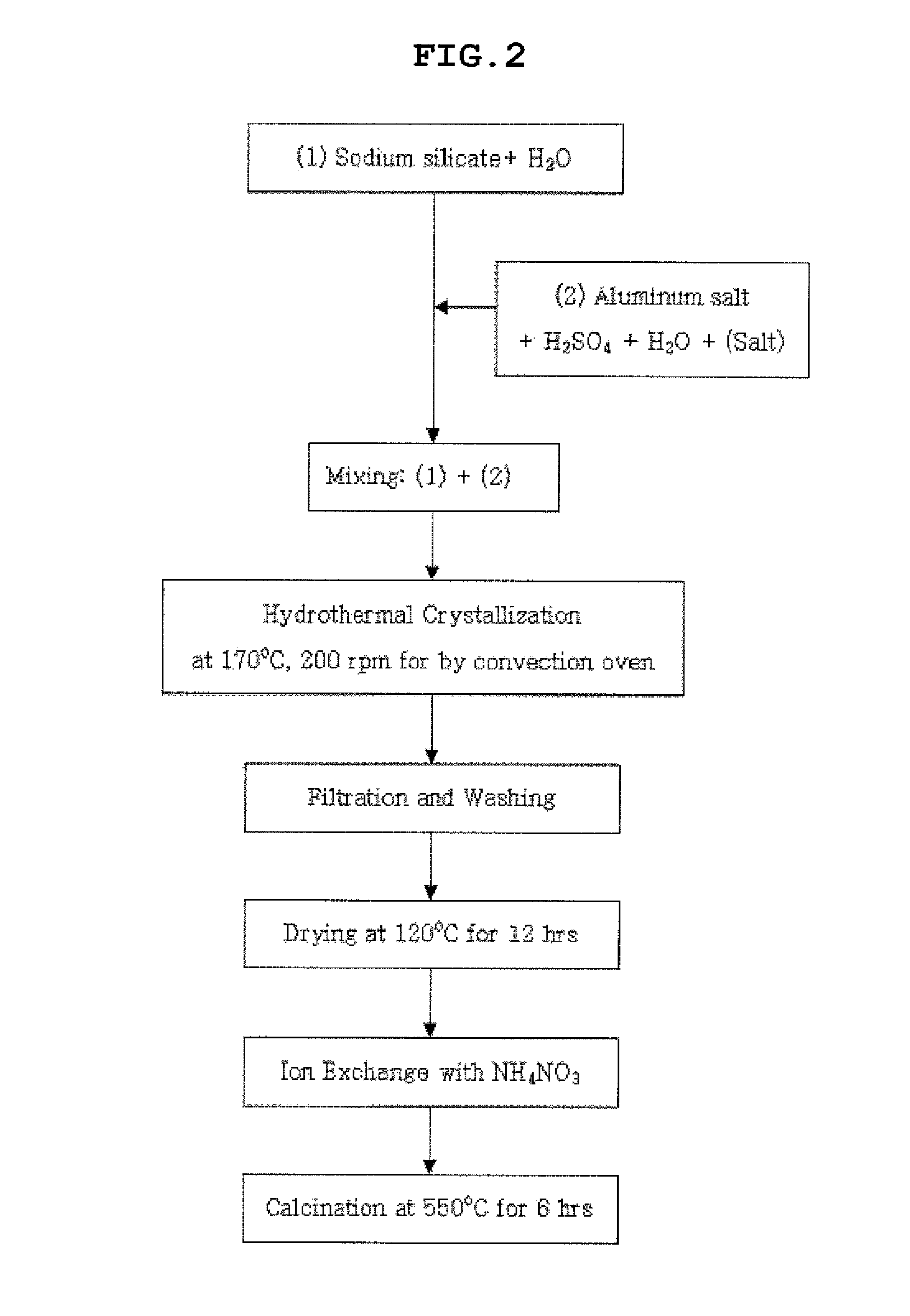Method of preparing ZSM-5 zeolite using nanocrystalline ZSM-5 seeds
a technology of zsm-5 and nanocrystalline zsm-5, which is applied in the field of preparing zsm5 zeolite, can solve the problems of limited use of natural zeolite, environmental pollution, and inability to use, and achieve the effect of easy synthesizing
- Summary
- Abstract
- Description
- Claims
- Application Information
AI Technical Summary
Benefits of technology
Problems solved by technology
Method used
Image
Examples
preparation examples 1 and 2
Synthesis of Nanocrystalline ZSM-5 Seed
[0061]13.6 g (Preparation Example 1) or 36.1 g (Preparation Example 2) of TPAOH serving as an organic structure-inducing material was mixed with 0.1 g (Preparation Example 1) or 0.4 g (Preparation Example 2) of aluminum isopropoxide serving as an alumina source, and then the mixture was uniformly stirred for 30 minutes. Subsequently, 13.6 g (Preparation Example 1) or 36.0 g (Preparation Example 2) of TEOS and 72.7 g (Preparation Example 1) or 27.5 g (Preparation Example 2) of distilled water were added to the stirred mixture, and then stirred for 2 hours to form a reaction mixture.
[0062]Subsequently, the reaction mixture was put into a microwave synthesis reactor (manufactured by CEM Corp.), and was then irradiated with microwaves at 80° C. for 90 minutes in the first step and then irradiated with microwaves at 130° C. for 180 minutes in the second step to synthesize a nanocrystalline ZSM-5 seed. Thereafter, the XRD analysis and SEM analysis of...
examples 1 to 4
Synthesis of ZSM-5 Using Nanocrystalline ZSM-5 Seed of Preparation Example 2
[0066]25.8 g of water glass serving as a silica source was mixed with 33.2 g of distilled water, and was then stirred for 30 minutes to provide solution 1. Further, 3.1 g of aluminum sulfate, 4.0 g (Example 1), 3.0 g (Example 2), 2.0 g (Example 3) or 1.1 g (Example 4) of sulfuric acid, and 33.2 g of distilled water were mixed and then stirred for 20 minutes, and then 0.7 g of the nanocrystalline ZSM-5 seed synthesized in Preparation Example 2 was added thereto and then stirred for 20 minutes to provide solution 2.
[0067]Subsequently, solution 1 and solution 2 were mixed with each other, stirred, put into a teflon vessel, hydrothermally synthesized at 170° C. for 24 hours and then cooled at room temperature to obtain a synthesized stock solution. Subsequently, the synthesized stock solution was dried at 120° C. for 12 hours, and then the X-ray diffraction (XRD) analysis and scanning electron microscope (SEM) a...
examples 5 and 6
Synthesis of ZSM-5 Depending on the Amount of Added Nanocrystalline ZSM-5 Seed
[0068]25.6 g of water glass serving as the silica source was mixed with 33.9 g of distilled water, and was then stirred for 30 minutes to provide solution 1. Further, 3.2 g (Example 5) or 3.1 g (Example 6) of aluminum salt, 1.9 g of sulfuric acid, and 33.9 g of distilled water were mixed and then stirred for 20 minutes, and then 1.4 g (Example 5) or 2.9 g (Example 6) of the nanocrystalline ZSM-5 seed synthesized in the Preparation Examples was added thereto and then stirred for 20 minutes to provide solution 2.
[0069]Subsequently, solution 1 and solution 2 were mixed with each other, stirred, put into a teflon vessel, hydrothermally synthesized at 170° C. for 24 hours and then cooled to room temperature to obtain a synthesized stock solution. Subsequently, the synthesized stock solution was dried at 120° C. for 12 hours, and then X-ray diffraction (XRD) analysis and scanning electron microscope (SEM) analys...
PUM
| Property | Measurement | Unit |
|---|---|---|
| size | aaaaa | aaaaa |
| size | aaaaa | aaaaa |
| reaction time | aaaaa | aaaaa |
Abstract
Description
Claims
Application Information
 Login to View More
Login to View More - R&D
- Intellectual Property
- Life Sciences
- Materials
- Tech Scout
- Unparalleled Data Quality
- Higher Quality Content
- 60% Fewer Hallucinations
Browse by: Latest US Patents, China's latest patents, Technical Efficacy Thesaurus, Application Domain, Technology Topic, Popular Technical Reports.
© 2025 PatSnap. All rights reserved.Legal|Privacy policy|Modern Slavery Act Transparency Statement|Sitemap|About US| Contact US: help@patsnap.com



